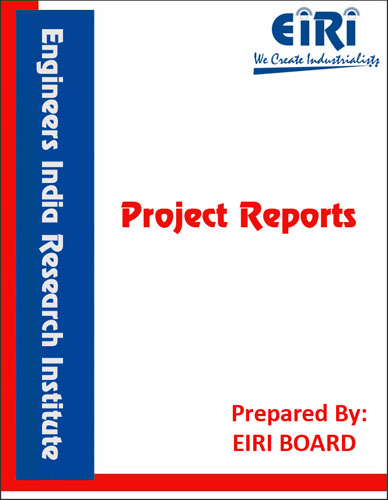PRESTRESSED CONCRETE ELECTRIC POLE (CAP: 200 POLES/DAY)
The project report includes Present Market Position and Expected Future Demand, Market Size, Statistics, Trends, SWOT Analysis and Forecasts. Report provides a comprehensive analysis from industry covering detailed reporting and evaluates the position of the industry by providing insights to the SWOT analysis of the industry.
We can prepare PROJECT REPORT as per your INVESTMENT PLAN for BANK LOAN REQUIREMENT and INDUSTRY ANALYSIS. All reports are prepared by highly qualified consultants and verified by a panel of experts.
Have Query? Click Here to Chat
Industry Expert is Online, Chat with him for more detail.

Wooden, steel and concrete poles were used for power distribution lines since 19th century.
The first poles used were wooden poles. When demand for poles increase and as the power lines under construction required longer poles suitable for resisting larger horizontal forces, steel poles were introduced in substitution to wood.
Though both materials are still in use through out the world, with wood primarily used for short length small forces country lines the general trend is to substitute both the materials with concrete and Use reinforced and prestressed concrete poles instead.
Wooden have limited life and steel poles have a longer life compared to wooden poles requires continuous maintenance for protection against corrosion concrete and particularly prestressed concrete poles can be considered as having an unlimited life without maintenance cost for their corrosion protection. Poles supporting power lines are subjected to relatively small vertical forces and primarily to large horizontal forces at bottom. The horizontal forces at their top are smaller along the axis of the power line and much larger on direction perpendicular to it. As in the perpendicular direction the pole must resist the horizontal forces caused from wind loads against the poles and the wires carried by them.
In view of the difference in the horizontal forces to which a pole is subjected, the original solution given and, still adopted by authorities is to give the pole a cross section with larger moment in one direction and smaller one in the direction perpendicular to it like example a rectangular or double T cross section. Experience however has shown that concrete poles with a circular cross section are preferable to poles with rectangular or T section as they resist better impact loads and little extra cost give the added advantage that they have an equal resistance to horizontal forces in all direction. The circular cross section besides the advantage mentioned earlier lends it self to very well to use for the manufacture of poles of the spinning process. As well known the spinning process is one of the best methods of casting freshly cast concrete, as the centrifugal forces applied to concrete, secure a dense, excellent quality concrete at relatively less manufacturing costs. The pre stressed hollow or tubular pole have proved to be more economical, easily transported and erected due to lightweight.
• INTRODUCTION
• B.I.S. SPECIFICATION
• SPECIFICATION OF PRESTRESSED CONCRETE POLE FOR OVERHEAD
POWER TRACTION AND TELECOMMUNICATION LINE
• RAW MATERIALS FOR PRE STRESSED CONCRETE POLE
• USES AND APPLICATION
• QUALITY STANDARDS
• PRE COST CONCRETE COMPONENTS AND EQUIPMENTS
• USE OF READY-MIX CONCRETE (RMC)
• POLE-TESTING EQUIPMENT
• MARKET SURVEY
• OVERVIEW OF POWER SECTOR IN UTTAR PRADESH
• ENERGY SUPPLY
• RURAL ELECTRIFICATION STATUS IN INDIA
• PRESENT MANUFACTURE OF PRESTRESSED ELECTRIC POLE
• PRESTRESSED CONCRETE ELECTRIC POLES
• PROCEDURE FOR PRESTRESSED POLE MANUFACTURE
• MANUFACTURING DETAILS OF PRESTRESSED CONCRETE POLE
(PSC POLES) (RECTANGULAR)
• PROCESS FLOW DIAGRAM
• DESIGN SPECIFICATION OF PRESTRESSED CONCRETE POLE
• TESTING METHOD FOR PRESTRESSED CONCRETE POLE
• TECHNICAL DATA OF PSC POLES
• CURING SYSTEM FOR PSC POLE
• REQUIREMENT OF BATCHING PLANT
• SUPPLIERS OF PLANT AND MACHINERY
• CONCRETE BATCHING AND MIXING PLANT
• SUPPLIERS OF PLANT AND MACHINERIES (IMPORTED)
• SUPPLIERS OF RAW MATERIALS
• ADDRESSES OF PLANT AND MACHINERY SUPPLIERS
APPENDIX – A :
1. COST OF PLANT ECONOMICS
2. LAND & BUILDING
3. PLANT AND MACHINERY
4. FIXED CAPITAL INVESTMENT
5. RAW MATERIAL
6. SALARY AND WAGES
7. UTILITIES AND OVERHEADS
8. TOTAL WORKING CAPITAL
9. COST OF PRODUCTION
10. PROFITABILITY ANALYSIS
11. BREAK EVEN POINT
12. RESOURCES OF FINANCE
13. INTEREST CHART
14. DEPRECIATION CHART
15. CASH FLOW STATEMENT
16. PROJECTED BALANCE SHEET



